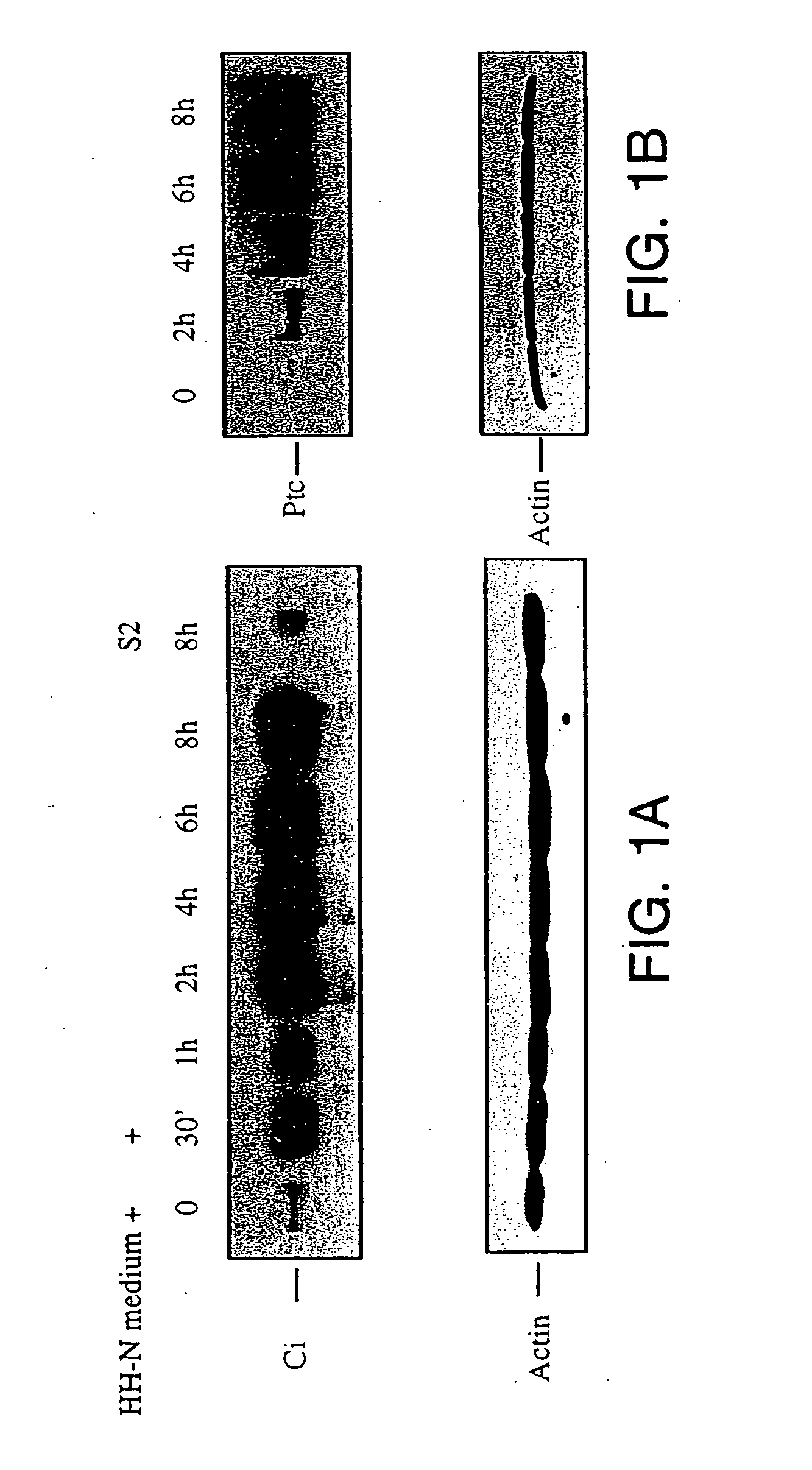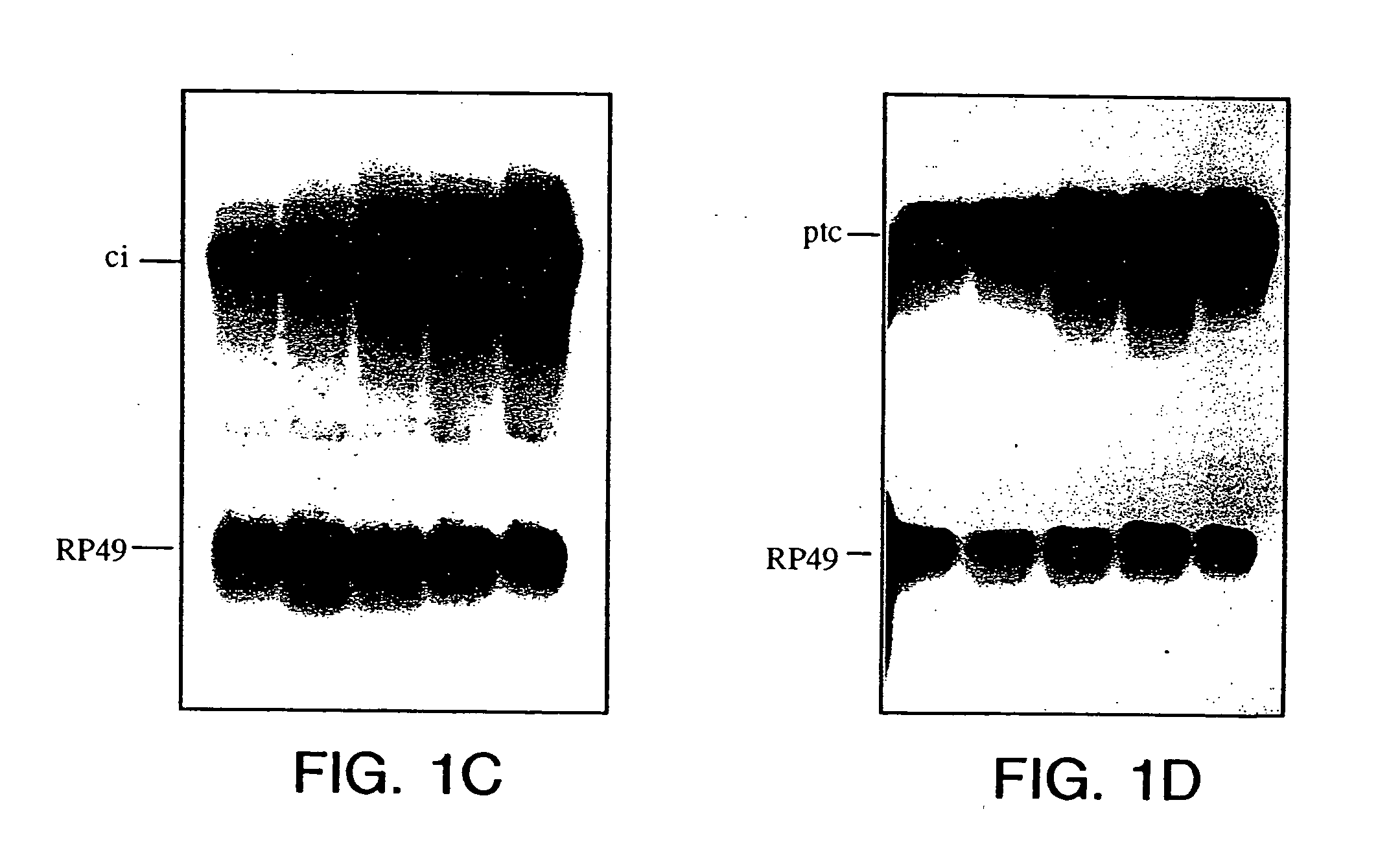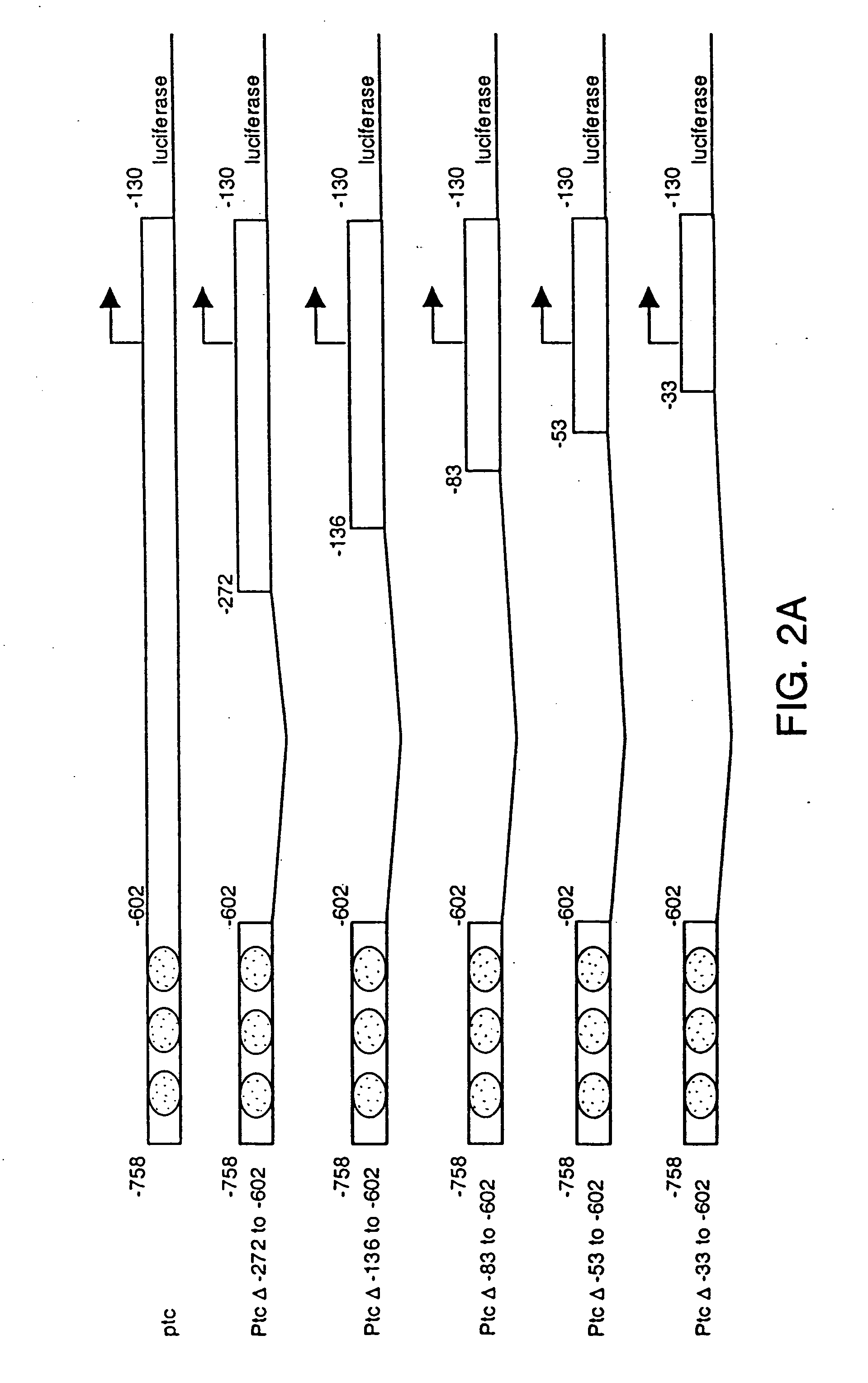Modulation of hedgehog-mediated signaling pathway
a signaling pathway and hedgehog technology, applied in the field of gene expression regulation, can solve problems such as inappropriate activation and uncontrolled cell proliferation
- Summary
- Abstract
- Description
- Claims
- Application Information
AI Technical Summary
Benefits of technology
Problems solved by technology
Method used
Image
Examples
example 1
Effects of HH-N Conditioned Medium
Methods
[0112] cl-8 cells were cultured as described in Van Leeuwen, F., et al. Nature, 368:342-344, 1994. Culture and transfection of S2 cells were performed as described in Porter, J. A. et al. Cell, 86: 21-34, 1996. The conditioned medium was made by culturing transfected S2 cells in cl-8 medium, and induced by adding CuSO4 to the final concentration of 0.5 Mm overnight. The conditioned medium was harvested the next day, centrifuged to remove S2 cells and the supernatant was used. To make lysate from cl-8 cells, cl-8 cells were washed, harvested in cold phosphate buffered saline (PBS), and then resuspended in NP-40 lysis buffer (150 Mm NaCl, 50 Mm Tris pH8, 1% NP-40, 1 Mm EDTA, 20 μg / ml aprotinin, 20 μg / ml leupeptin, 1 μg / ml pepstatin A, 2.5 μg / ml antipain, 100 μM PMSF, 50 mM NaF, 5 mM Na2P4O7). Cells were lysed at 4° C. for 10 minutes, then centrifuged at 13,000×g for 10 minutes. The supernatant was saved for West...
example 2
Induction of Luciferase Using a Ptc Promoter
[0119] A luciferase reporter under the control of the ptc promoter from +130 to −758 was constructed and transfected into cl-8 cells. The experiments were conducted using the methods described in Example 1.
Results
[0120] The luciferase activity was induced about 6 fold when treated with HH-N conditioned medium compared to treatment with the S2 conditioned medium (FIG. 2B). Higher folds of induction were achieved when various regions of the ptc promoter were deleted (FIG. 2A and 2B). The luciferase reporter activity was most sensitive to HH signaling, giving about 60 to 70 folds induction, when regions between −136 to −602 were deleted.
[0121] The consensus binding sequence of Gli, the vertebrate homolog of Ci, was found in the promoter region of the ptc. The role of Ci in activating ptc transcription through these consensus sequences was examined. The three potential Ci binding sites in the ptc promoter of the reporter construct were mu...
example 3
Role of Phosphatase in HH-Signaling Pathway
Methods
Immunoprecipitation and Treatment with Phosphatase
[0122] cl-8 cells were incubated in conditioned medium for 4 hours and lysed on ice for 20 minutes in 1 ml of NP-40 lysis buffer per T75 flask. The lysate was incubated with 100 μl of anti-Ci 2A1 or 0.3 μl of normal rat serum at 4° C. for 2 hours. 50 μl of 50% Protein G beads were added and incubated for 1 hour. The beads were collected and washed in NP-40 lysis buffer, then in lambda phosphatase buffer (50 mM Tris pH 7.8, 5 mM dithiothritol, 20 mM MnCl2, 100 mg / ml bovine serum albumin, 20 μg / ml aprotinin, 20 μg / ml leupeptin, 1 μg / ml pepstatin A, 2.5 μg / ml antipain, 100 μM PMSF). The beads were resuspended in 50 μl of lambda phosphatase buffer, plus 1 mM of sodium orthovanadate or 1.5 μl (30 unit) of lambda phosphatase according to the procedure. Each sample was incubated at 30° C. for 1 hour, then washed in NP-40 lysis buffer, and was boiled in SDS sample buffer for analysis.
P...
PUM
| Property | Measurement | Unit |
|---|---|---|
| pH | aaaaa | aaaaa |
| pH | aaaaa | aaaaa |
| nucleic acid sequence | aaaaa | aaaaa |
Abstract
Description
Claims
Application Information
 Login to View More
Login to View More - R&D
- Intellectual Property
- Life Sciences
- Materials
- Tech Scout
- Unparalleled Data Quality
- Higher Quality Content
- 60% Fewer Hallucinations
Browse by: Latest US Patents, China's latest patents, Technical Efficacy Thesaurus, Application Domain, Technology Topic, Popular Technical Reports.
© 2025 PatSnap. All rights reserved.Legal|Privacy policy|Modern Slavery Act Transparency Statement|Sitemap|About US| Contact US: help@patsnap.com



